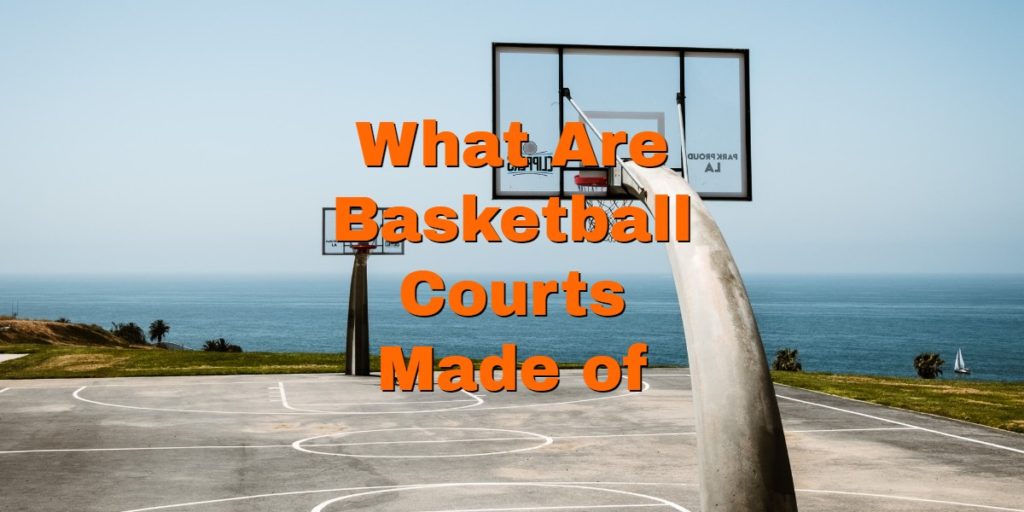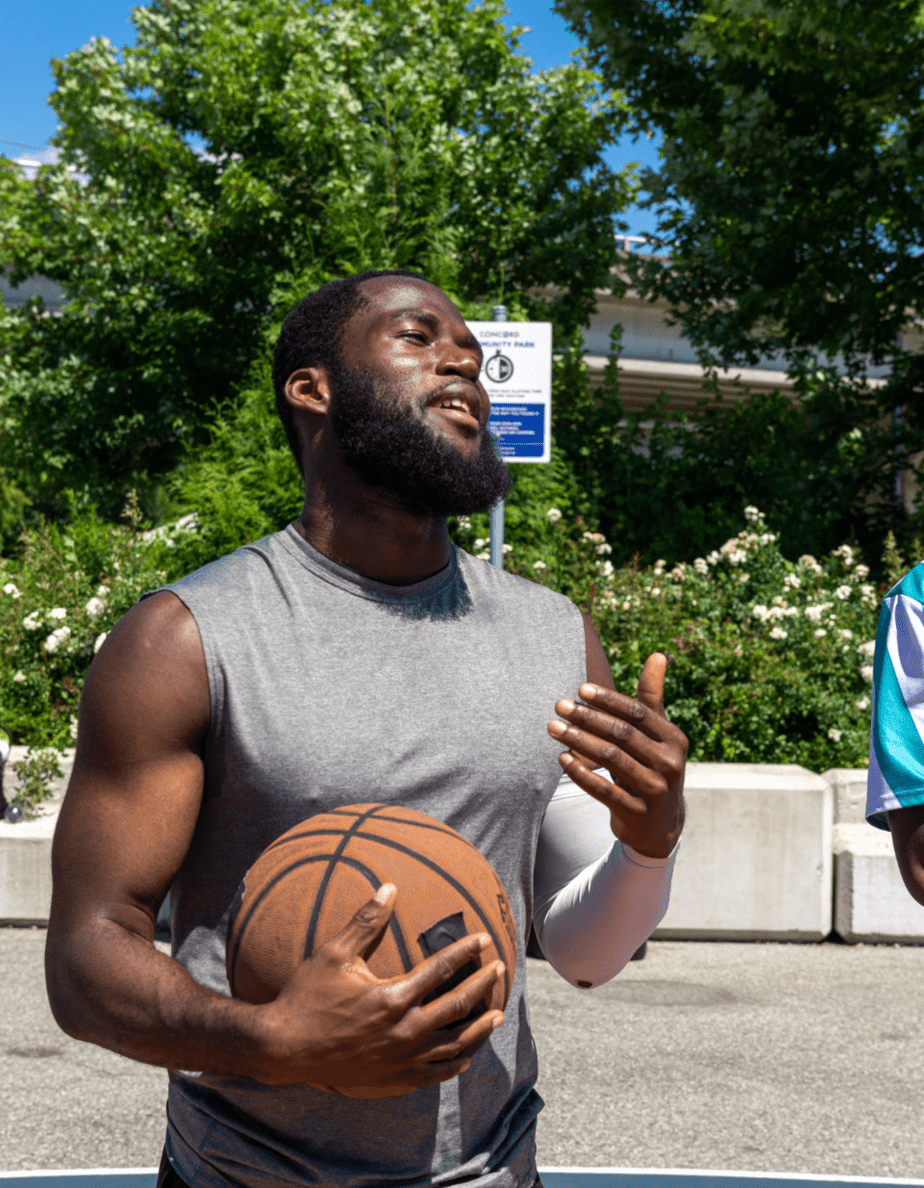What Are Basketball Court Floors Made Out Of: Indoor, Outdoor, Materials and Costs
Since basketball’s invention in 1891 in Springfield, MA, basketball has become the second most popular sport in the world after international football.
The sport is played in nearly every country on indoor, and outdoor, courts from TD Garden in Boston to the isolated mountains of Guatemala to the prefecture-level city of Dongguan in southern China. But what are basketball courts made of?
Most high-end indoor basketball courts are made of polished hardwood, usually maple. Outdoor courts range from concrete and asphalt to bare dirt floors. The German “ASB GlassFloor” basketball court is made of glass embedded with LED lighting — a futuristic take on the indoor game.
What Is the Best Flooring for a Basketball Court
The best flooring for indoor basketball courts is typically maple. Slightly more expensive than oak, the dark hardwood is hard-wearing for intensive court use. Though prone to scratching, maple wood is easily protected with a good coat of wax, polished for a nice sheen.
Maple hardwood also provides a smooth, clean surface with no blemishes for a consistent bounce for the basketball. It’s resistant to splintering, too. The tightly packed wood grains offer durability and low maintenance costs.
Maple and other hardwood floorings, however, should not be used for outdoor courts. Sunlight and rain would damage the wood and likely warp the floor, no matter how much protective coating you apply.
Some folks use a maple-oak hardwood mix to save a bit of money on installation.
What Is an Outdoor Basketball Court Made of?
The best outdoor basketball surface is concrete, though asphalt and plastic also make for great quality.
Concrete and asphalt both offer good options for durable, weather-resistant flooring. Asphalt’s porous surface is better for drainage, but concrete tends to last longer. As a homeowner, you can easily build your own outdoor basketball court by pouring a slab of concrete, reinforced with steel rebar.
All things considered, concrete is the more durable and cost-effective choice.
Most outdoor courts in America and around the globe are made of asphalt. It’s durable but cheaper. Banging beneath the boards on asphalt is how most of us learned the sport as school kids on the playground or at the park.
Over time, asphalt courts become cracked and chipped under the hot, unforgiving sun and punishing rain or snow. If not repaired, those imperfections can alter play on the court and may even cause injuries.
Many of us have tripped on asphalt courts while angling for a rebound. The skinned knees and blood is part of the game.
How To Make Your Own Outdoor Basketball Court Video
More Expensive Options for Outdoor Basketball Courts
Some homeowners prefer to build outdoor basketball courts with plastic or rubber polymer, which ranges in quality and price.
You might easily install a high-quality floor of interlocking plastic tiles suitable for an outdoor basket court or other sports. The ⅝ inch interlocking polypropylene tiles are resistant to moisture and provide a good bounce for the basketball. You might construct an outdoor basketball court by laying a concrete slab reinforced with steel rebar. Then top the concrete with plastic flooring for improved traction, safety, and bounce.
Some manufacturers recommend installing flooring with a layer of rubber between the concrete foundation and the plastic topping. Others even go further to place a polyurethane finish on the plastic flooring for even greater weather resistance.
If you’ve ever fought for rebounds or taken a spill on an asphalt basketball court, you’ll appreciate “eating it” on a much nicer and forgiving floor. The rubber and plastic layers help to absorb the shock of the fall and to protect from skin abrasions.
Depending on the size of your basketball court, you might spend between $200 and more than $2,000 on tiling for this type of court, which doesn’t include the foundation.
The weather-proof plastic basketball court tiles are UV-resistant and won’t fade over time. They’re also available in an array of attractive colors that might improve your home’s outdoor area.
Some retailers even claim that a high-quality outdoor basketball court adds more value than a swimming pool to a property. But compared to properties with no such improvements, houses equipped with an outdoor basketball court were valued at 11.3% higher than those with no outdoor courts.
That might sound intuitive and not at all scientific. But the bottom line is that adding a quality outdoor basketball court has become a good way to add some value to your property, aside from traditional landscaping and a good paint job.
Cost estimates for outdoor basketball courts in the United States and comparable countries range from $11,000 to $76,000 for a high-quality full outdoor court. The average cost spent in the United States on an outdoor basketball court is $35,000.
The typical cost of a full-size asphalt outdoor basketball court is $10,000 to $35,000. The cost for building a comparable indoor basketball court also runs around that price range.
That’s generally why most houses in America might have a basketball hoop over the garage, where there’s already an asphalt driveway. Only the priciest of properties may have a dedicated full outdoor basketball court of high quality.
What Material Is Used for Outdoor and Indoor Basketball Courts?
A slightly different approach might be to build an outdoor basketball court topped with artificial turfs, like the playing fields of most football stadiums.
Artificial turf is a great solution if you want to be able to move your outdoor basketball court around on your property. You may be the type of person who likes to rearrange your furniture frequently and change your landscaping. If you get tired of the court in one spot on the back lawn, you can simply move it.
The artificial turf is easy to partition and repaint. The soft basketball court surfaces also protect players from injury on your outdoor basketball court. The best part is that artificial turf is weather-resistant and durable.
Like other solutions such as interlocking tiles, you can also move and repaint the artificial turf to change the size of your outdoor basketball court or to convert it to another sport. We hope this helped answer your question of what are basketball courts made of?

Troy Wright
I am a lifetime basketball enthusiast and loved playing basketball competitively through high school. I still try and play at least 3 times a week and explore all kinds of equipment and training to keep myself on the court and continually getting better. I am a college basketball fanatic and move onto the NBA when March Madness ends.
Meaningful conversations happening daily about training, recovery, and injury-specific rehabilitation as well as sport-specific discussions on playing, coaching and refereeing your favorite sport. We welcome experts and those with curious minds seeking answers.
Join The Stay On The Court Community!